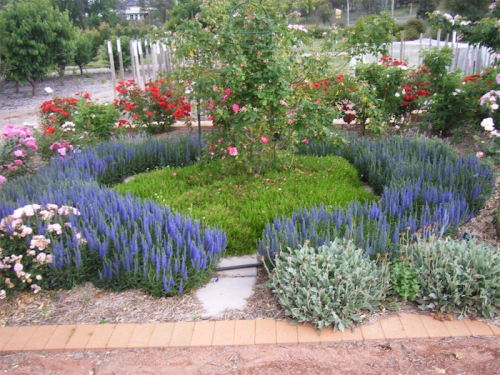
WHAT a stinker! That’s the only way to describe the relentless heat we have experienced and it’s likely to continue for some time yet.
Gardens have been sustained, to a minor degree, by the recent storm activity. Unfortunately, most storm rain simply runs off.

On the bright side, many hardy plants from the hottest areas of the globe almost revel in the heat. As I have preached before, many perennials will survive very well on an absolute minimum of water. Plus they provide super late-summer and autumn colour.
WITH watering potted plants in this heat, you may believe that by flooding the top of the container the plant has been watered. You see it flow from the bottom of the pot and mistakenly think that’s sufficient. No so. With plastic and fiberglass pots, the potting mix often shrinks from the sides of the pot and the water simply flows between the potting mix and the space between the edges of the pot. The actual potting mix itself remains dry! Use a stick to pack in new potting mix to fill that void before watering.
I AM looking out over the garden at a mini forest of greenery with flower heads rapidly developing, namely salvias. This is a large family of more than 500 species of both annuals and perennials of the mint family.
These perennials have the great advantage of being easy to divide in winter and spring. Perfect for filling in vacant spots in the garden by simply digging up a clump and dividing the roots with secateurs. Before I suggest the ornamental varieties, we should consider the culinary Salvia officinalis or common sage often used as a stuffing combined with thyme and rosemary.
Lower-growing salvias (up to 40cm high) include Salvia “Impact Purple”, “Marcus” and “Aztec Blue”. The spectacular “Heatwave” series (to 70cm) is a must in any garden. Two examples are “Heatwave Brilliance” and “Heatwave Sizzle”, just two out of 10 varieties. The tall varieties for the back of the garden bed (up to 1.4m) include “Love and Wishes” and “Limelight” to name just a couple. Over the next few weeks check them out at a local garden centre.

THERE are some plants, namely the fungi family, picked in the wild that are a favourite for adding flavour to sundry dishes and yet the same family can be killers.
One of the only plants to survive the great Ice Age several million years ago was fungi, a web of diverse species underpinning life on earth. A team of mycological researchers from the Royal Botanic Gardens, Kew, reveals the influence of fungi in almost every sphere of life with 90 per cent of wild plants dependent on associations with fungi to survive.
In 2017, almost 2000 new species were described. Possibly 93 per cent of all fungi may still be unknown to science.
However, a dire warning: locally this time of the year is the main growth period for fungi or mushrooms. With warmth and dampness, especially around oak trees, they multiply rapidly, including Amanita phalloides or death cap mushrooms. In relatively recent times, four people in Canberra have died from eating them.
The ACT government website on mushrooms recommends you do not pick any mushrooms in the wild. Many migrants from overseas don’t realise the danger in our mushrooms. It is recommended to buy mushrooms only from a supermarket or farmers’ market.
Who can be trusted?
In a world of spin and confusion, there’s never been a more important time to support independent journalism in Canberra.
If you trust our work online and want to enforce the power of independent voices, I invite you to make a small contribution.
Every dollar of support is invested back into our journalism to help keep citynews.com.au strong and free.
Thank you,
Ian Meikle, editor




Leave a Reply